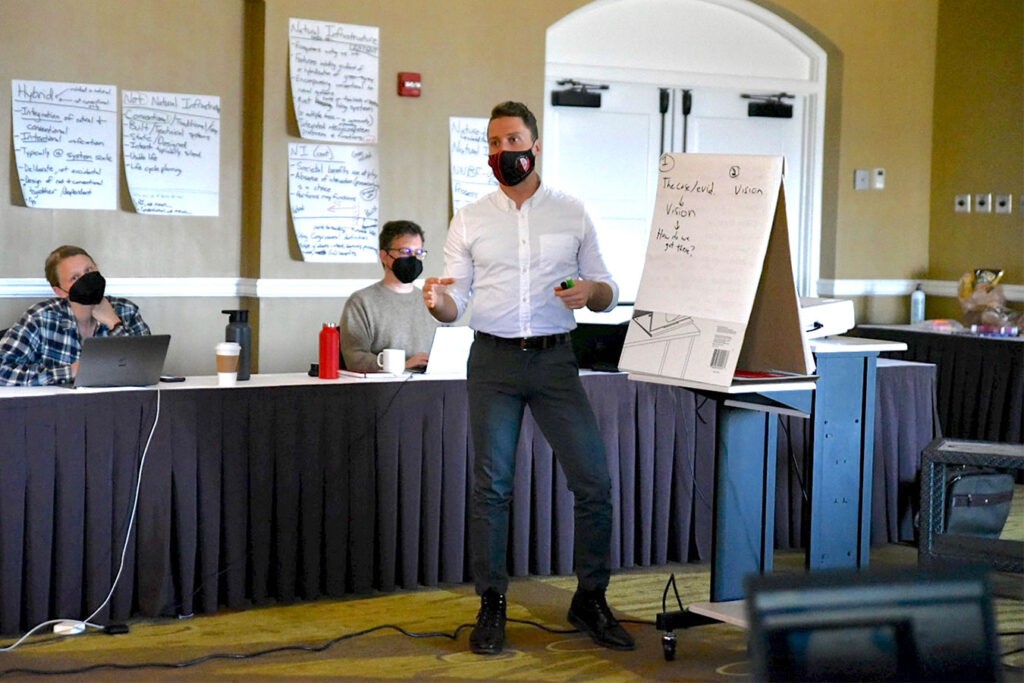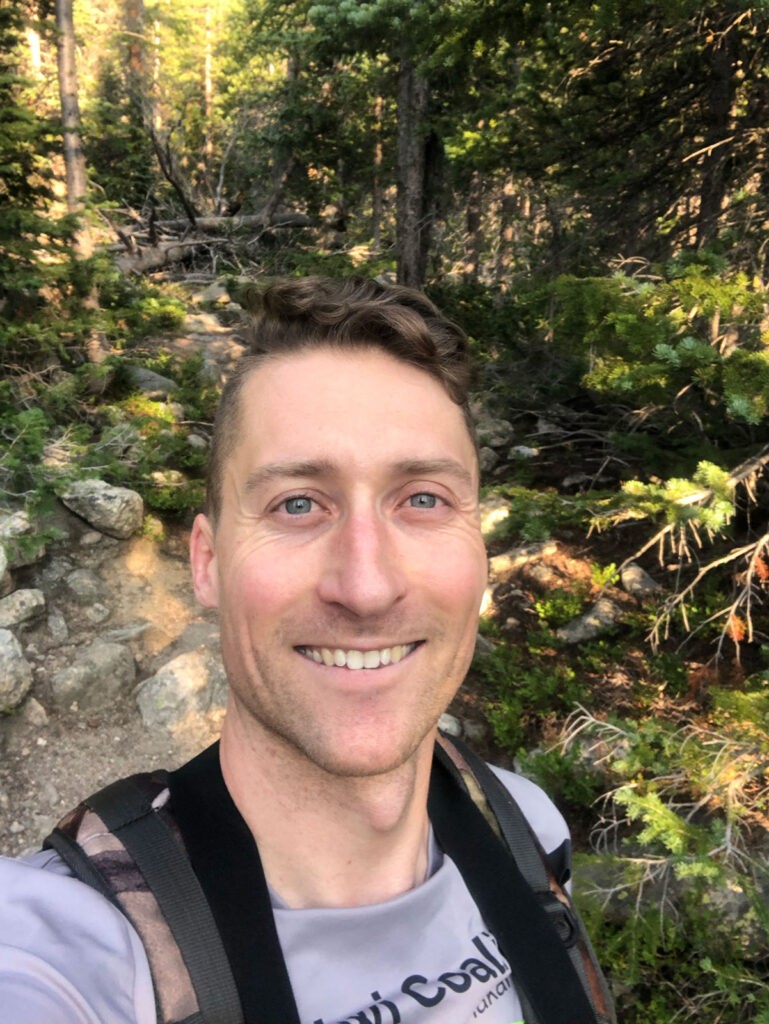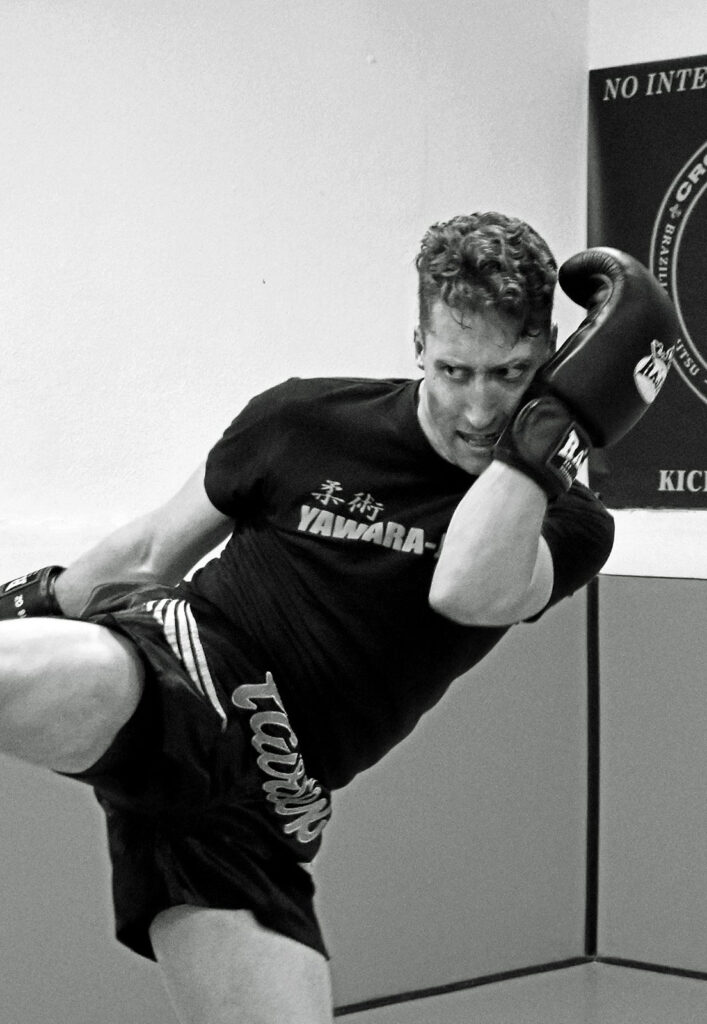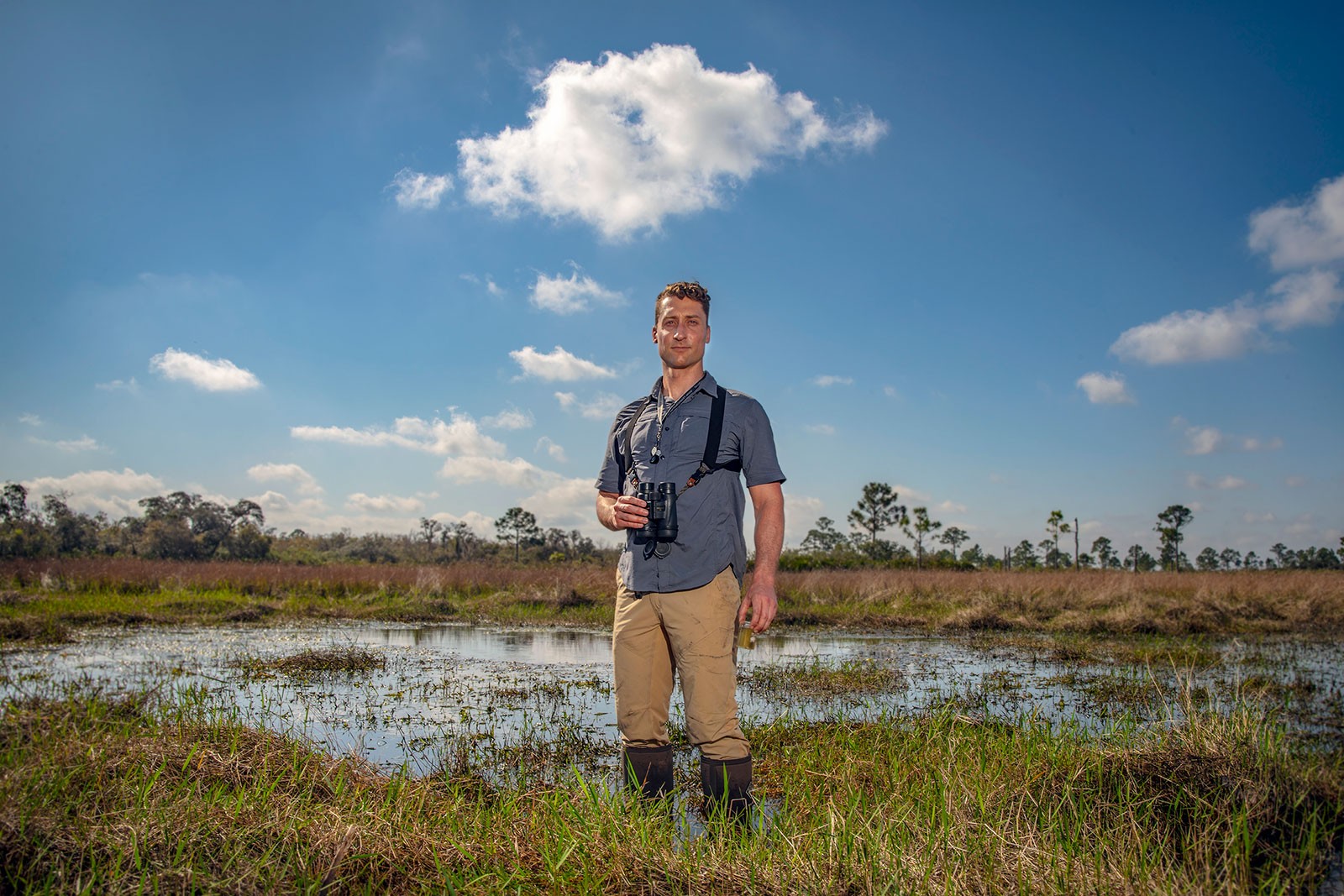Charles van Rees has always been into nature.
Growing up in Needham, Massachusetts, he prided himself on being the “weird kid who knew what bug that was.” But during his teen years, environmental science classes revealed that many of the plants and animals he enjoyed were in peril. He’d also spent a few years immersing himself in East Asian martial arts and their underlying philosophies, which included strong components of morality and personal responsibility.
“As a 15-year-old boy, that affected me a lot,” he said. “I thought, ‘You’ve got to do something about it.’”
He studied conservation science at Connecticut College and then earned a Ph.D. in ecology, evolution and behavior at Tufts University, where he also pursued interdisciplinary studies in water resources management. Now an assistant research scientist at the Odum School of Ecology, and an affiliate at the River Basin Center and Institute for Resilient Infrastructure Systems (IRIS), van Rees describes himself as a conservation scientist and naturalist.
“I’m not just interested in doing science,” he said. “I want to specifically apply scientific research to promote conservation action and impact.”
Intersections and infrastructure
Freshwater is a major intersection between protecting wildlife and building a better future—a big nexus of societal and ecological dynamics that goes both ways, according to van Rees.
“When you look at a complex system, if you want to be efficient about impact, you look for that one central piece that you can influence and that will cause everything else to change,” he said. “A lot of times freshwater is a good leverage point, because so much other stuff revolves around water: human and non-human life—because we have to drink water—agricultural food production, climate, disaster, international politics, species distributions.”
Van Rees arrived at UGA in 2021 as a postdoctoral research associate at the River Basin Center, hired to work with the Network for Engineering With Nature. IRIS founded N-EWN in partnership with the U.S. Army Corps of Engineers Engineering With Nature initiative to build a network of partners devoted to accelerating the field of natural infrastructure and nature-based solutions.
“Charles is an extraordinary naturalist with very broad training,” said Seth Wenger, director of the River Basin Center. “His skills, combined with his productivity, positivity and enthusiasm, will make him an asset in this new role.”
With N-EWN, van Rees helps coordinate the biodiversity arm, centered around integrating biodiversity conservation and sustainable infrastructure development.
“The paradigm that we’re striving for now is, can we do more than just mitigate for the damage we cause whenever we build infrastructure?” he said. “Instead, we’re trying to illustrate that you can do restorative infrastructure, you can do net-positive stuff for wildlife, you can find these win-win situations for people and the environment.”
In this role, van Rees collaborates closely with professionals from diverse disciplines—landscape architects, environmental policy and economics experts, engineers and hydrologists, for example.
“We sit there and try to communicate across huge differences in expertise, professional culture and vocabulary, and then we write cool interdisciplinary papers that bring all these knowledges together in new and powerful ways,” he said. “It has been really thrilling to get to do that every day for a job.”

In August, van Rees and a team from N-EWN published a study that addresses the critical need for effective monitoring—and timely reassessment—of nature-based solutions projects. With passage of the trillion-dollar bipartisan infrastructure bill, and an increase in climate risks to mitigate through infrastructure, the stakes are high.
“We know that billions of dollars are about to come funneling into national infrastructure for the next however many years,” van Rees said. “How do we do this in a way that is strategic, deliberate and logical? We know we’re going to make some mistakes. How do we document those mistakes and do better going forward? How do we make nature-based solutions maximally effective?”
Biologist ruins everything
This spring, around the same time he gave a TEDx talk on nature’s role in inspiring creativity and innovation, van Rees launched the Gulo in Nature blog. It grew out of a question he asked himself after observing the gap between academic researchers and people he met on the street: Why isn’t conservation reaching the majority of people?
“If no one has any idea what any plant or animal species is, how the heck is anyone going to care?” he said. “If we can get people the slightest bit interested in nature and biology and evolution, they may learn something and might have more to say when those issues come up in our society.”
Gulo, a Latin word meaning “glutton,” is the scientific name of the wolverine, an animal with a huge appetite that wanders over large expanses of wilderness—not unlike van Rees’ approach to learning about all aspects of the natural world. But the blog isn’t for nature nerds like him. It’s an entry point for people who don’t spend time outside, a catalyst for welcoming outsiders to science and natural history.

Accordingly, the blog takes inspiration from pop culture. Posts in the “Biologist Ruins Everything” category include van Rees explaining the science behind popular curiosities like the squirrel superhero meme (spoiler alert: they’re just scratching) and where turkeys sleep at night, after an episode of the sci-fi series “Rick and Morty” raised the question but neglected to answer it. In other categories, like “Naturalist Answers” and “The Deep Stuff,” he explores questions like why do people find birdsong relaxing and what is biodiversity?
Van Rees contributes to multiple podcasts, serving as the resident bird nerd and “science guy” for the outdoor podcast Nature Guys (look for the Thanksgiving episode on cranberry bogs) and as conservation correspondent for K9 Conservationists, dedicated to the use of trained dogs for wildlife conservation research.
Before launching Gulo in Nature, van Rees spent more than a year planning, designing and researching search engine optimization to make sure it would be found by his target audience.
“There’s certainly the compulsive need for me to blab endlessly about nature and some desire for a place to channel that, because otherwise I’ll just never shut up,” he said. “From an applied perspective, though, it’s still a conservation thing for me. It’s about reaching audiences that my published papers never will.”
Wax on, wax off
Recently, van Rees spent some time camping in the Chiricahua Mountains in southeastern Arizona, where he was excited to see his first Painted Redstart and find a large group of riffle bugs in a spring tucked deep in a canyon. When he’s not outside enjoying nature—or writing and talking about it—he’s often engaged in some form of martial arts, which he’s been practicing for about 20 years.
In Athens he’s studying Brazilian jiu-jitsu, MMA (mixed martial arts), and traditional Shorinji-ryu Karate, as well as teaching self-defense. He enjoys the interdisciplinary, mixed-styles nature of MMA—perhaps not surprising given that he combines different branches of science in his academic work.
In his new role as assistant research scientist, van Rees will continue his work with N-EWN but expand his service at Odum to include mentoring graduate students, serving on committees and co-advising students as part of the graduate faculty.
“One of the things I’m most excited about is actually getting to participate and be a part of this community more directly,” he said, “because it’s such a kind and talented group of people.”


